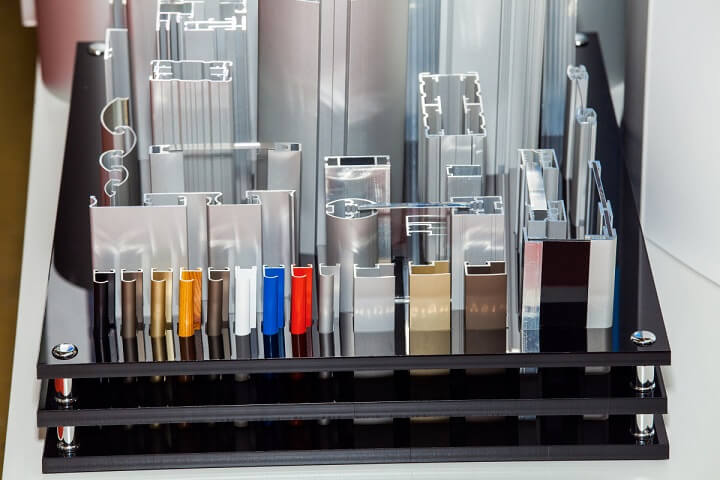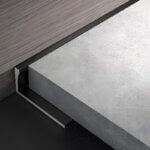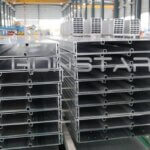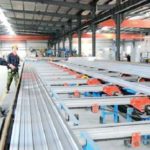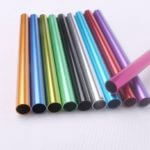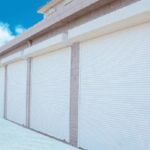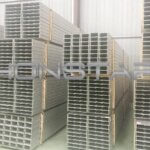The 7 types of high value added finishes for aluminum profiles
The 7 types of high value added finishes for aluminum profiles
The following 7 finishes can enhance your aluminum extrusion profiles
Aluminum is a very important common metal in modern industry.
It’s lightweight and rust resistance make it the first choice metal for many manufactured products, from space shuttle components to soda cans.
Once you’ve decided to design with aluminum extrusions, there are some important choices you need to make. One such choice is which finishing option to choose.
The 7 types of high value added finishes for aluminum profiles
Here are the most popular finishes that make your aluminum profile high value added
1. Anodizing
Anodizing is an electrochemical process that converts the metal surface into a decorative, durable, corrosion-resistant, anodic oxide finish.
This electrochemical process provides additional protection aside from the natural oxide film. A durable, porous anodic oxide layer is formed on the surface of the aluminum.
Anodized aluminum profiles will also accept vibrant colors.
2. Powder coating
Powder Coating is the application of organic powder by electrostatic attraction to metal. Once cured by heat the finish is smooth, hard skin.
Powder coatings leave behind a film that can meet stringent performance criteria. At the same time, they do not contain VOCs. This is ideal for meeting environmental regulations on VOCs.
The product is applied as a solid on the extrusion. While going through the oven process, solid particles fuse together to form the film, powder coated aluminum profiles are widely used in the market.
3. Liquid paint
Paint is any liquid, liquefiable, or mastic composition that, after application to a substrate in a thin layer, converts to a solid film.
It is most commonly used to protect, color, or provide texture to objects.
Paint can be made or purchased in many colors—and in many different types, such as watercolor, synthetic, etc.
Paint is typically stored, sold, and applied as a liquid, but most types dry into a solid.
These coatings come in many colors and provide a uniform film thickness.
4. Bright dipping
Bright Dipping is a chemical or electro-brightening treatment that produces an extremely high luster on aluminum.
The bright dip process is performed on raw aluminum.
The harder tempered the alloy is, the brighter the end product will be.
The way that bright dip aluminum achieves this high luster is by smoothening the surface of the aluminum at the microscopic level.
Bright dipping provides a very shiny, mirror-like look for aluminum extrusion and bright dip anodizing enhances the glossy appearance of aluminum for cosmetic applications and achieves a highly reflective surface finish similar to mechanical polishing, but more than mechanical polishing.
Polished aluminum profiles mostly are applied in the decoration, shower and picture frames.
5. Wood grain effect
Aluminum extrusions can be designed as complex interlocking shapes.
The wood effect gives them a nice, natural look. Now you can design products that have a nice, natural wood look and all the benefits of aluminum.
After applying a base coat of powder, profiles can go through sublimation.
Technicians wrap the profiles in a thin film with a pattern on it.
The sublimation process transfers that pattern directly onto the extrusions.
Wood grain effect aluminum profiles are the trend for home decoration.
6. Electrophoresis
The electrophoresis process has a number of alternate names: electrocoating, e-coating and electrophoretic coating.
Parts are immersed in a paint solution contained in an electrified tank.
The paint in the solution exists as ions with a positive or negative charge.
When the parts are immersed in the tank, the paint migrates to the surface of the part.
The paint ions gain or lose electrons at the surface of the part and are changed to solid paint that attaches to the surface.
7. Mechanical finishes
Aluminum can be buffed, blasted, polished, grinding, sanded or hammer pinned, etc.
These finishes can improve surface quality or prepare aluminum for other cosmetic finishes. In general, the aluminum profile will be made with chemical finishes after the mechanical finishes to avoid natural oxidation.
Mechanical finish methods can give aluminum several different types of surface texture – from rough or patterned to a mirror finish.
That is the most popular finish for aluminum profiles, which can make your aluminum profile high value-added, and enhance your extrusion profile to meet the market demand and your project request.
Honstar Aluminum Products offer mechanical finishes and chemical finishes for aluminum extrusion.
Extrusion, mechanical finishes and chemical finishes under one roof allow for minimized lead times, reduced production costs, and improved end-product quality for our valued customers. It avoids finger-pointing between subcontractors and the extruder if defects occur, reducing potential customer headaches.
Honstar Aluminum Products Co., Ltd has been an aluminum industry leader for over 12 years in manufacturing precision aluminum parts, custom aluminum extrusions and standard aluminum extrusions.
We focus exclusively on producing the smallest, most complex, precision aluminum parts, custom aluminum extrusions, standard aluminum extrusions and floor covering aluminum profiles.
Contact us now for your aluminum profile order, and offer the total solution and one-stop service for your request.
Get A RELIABLE No-Obligation Quote

